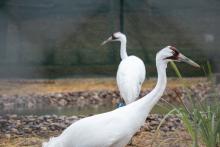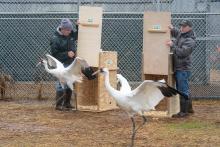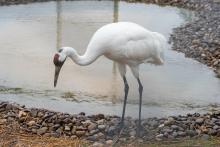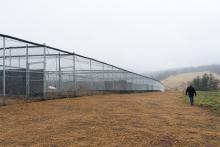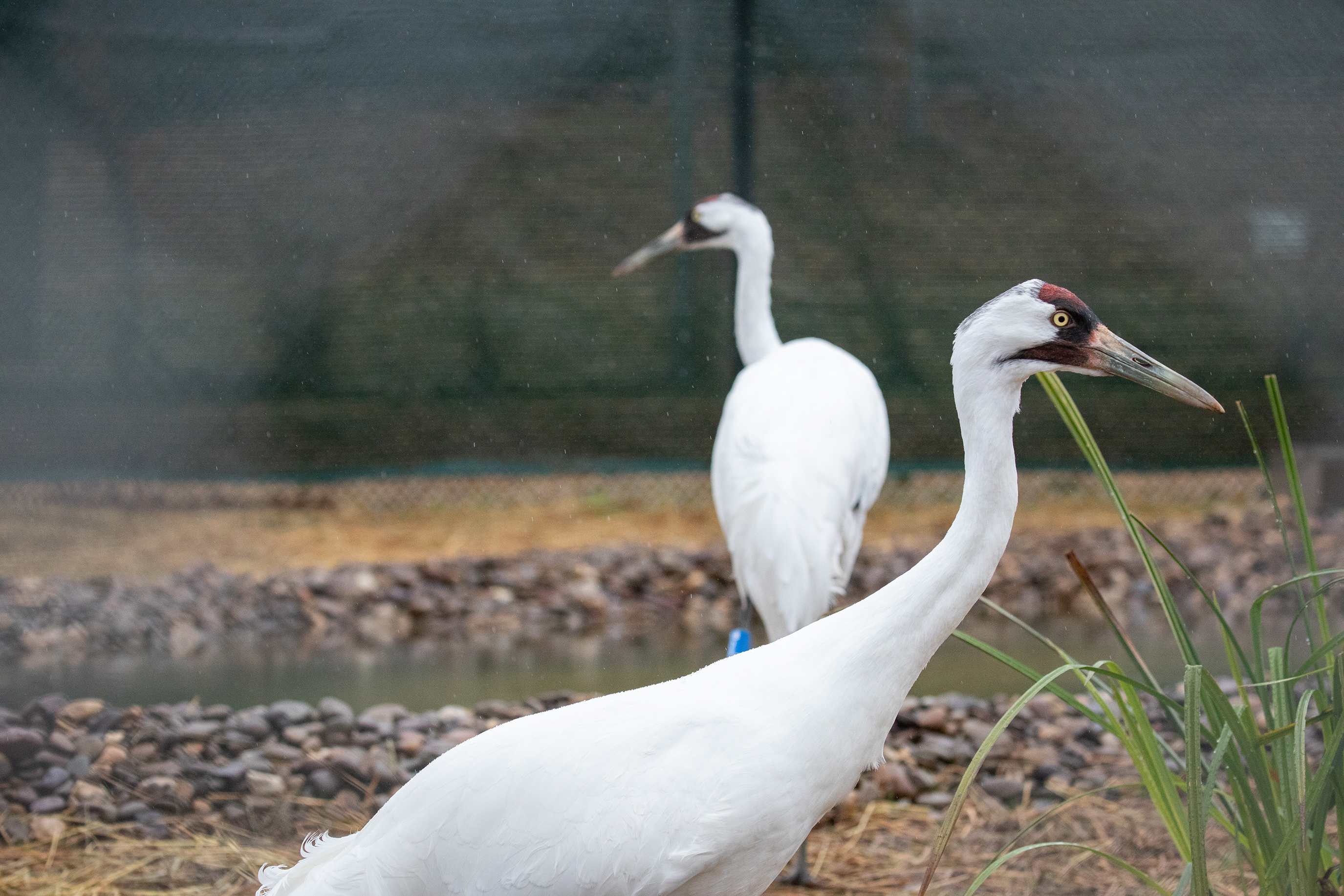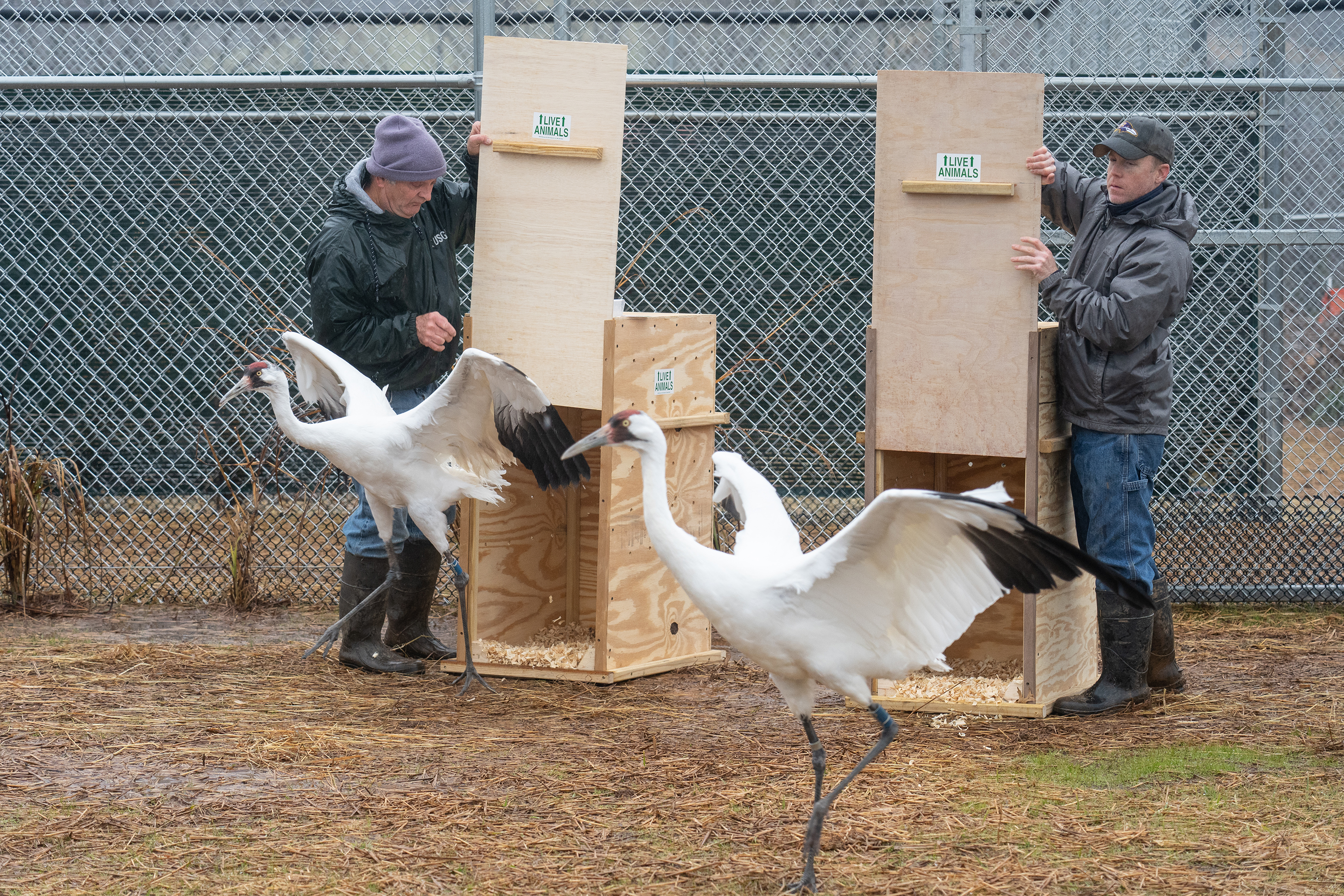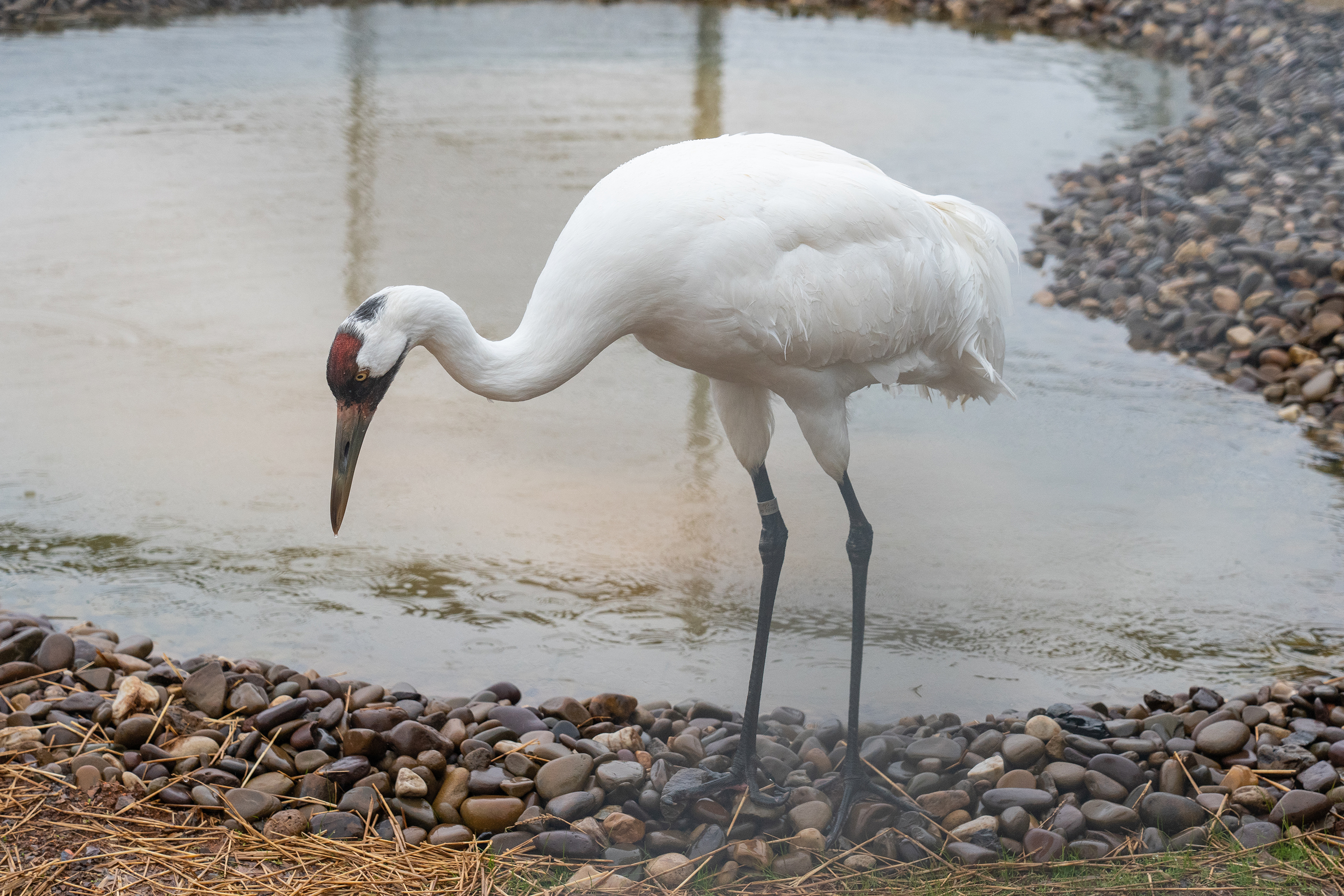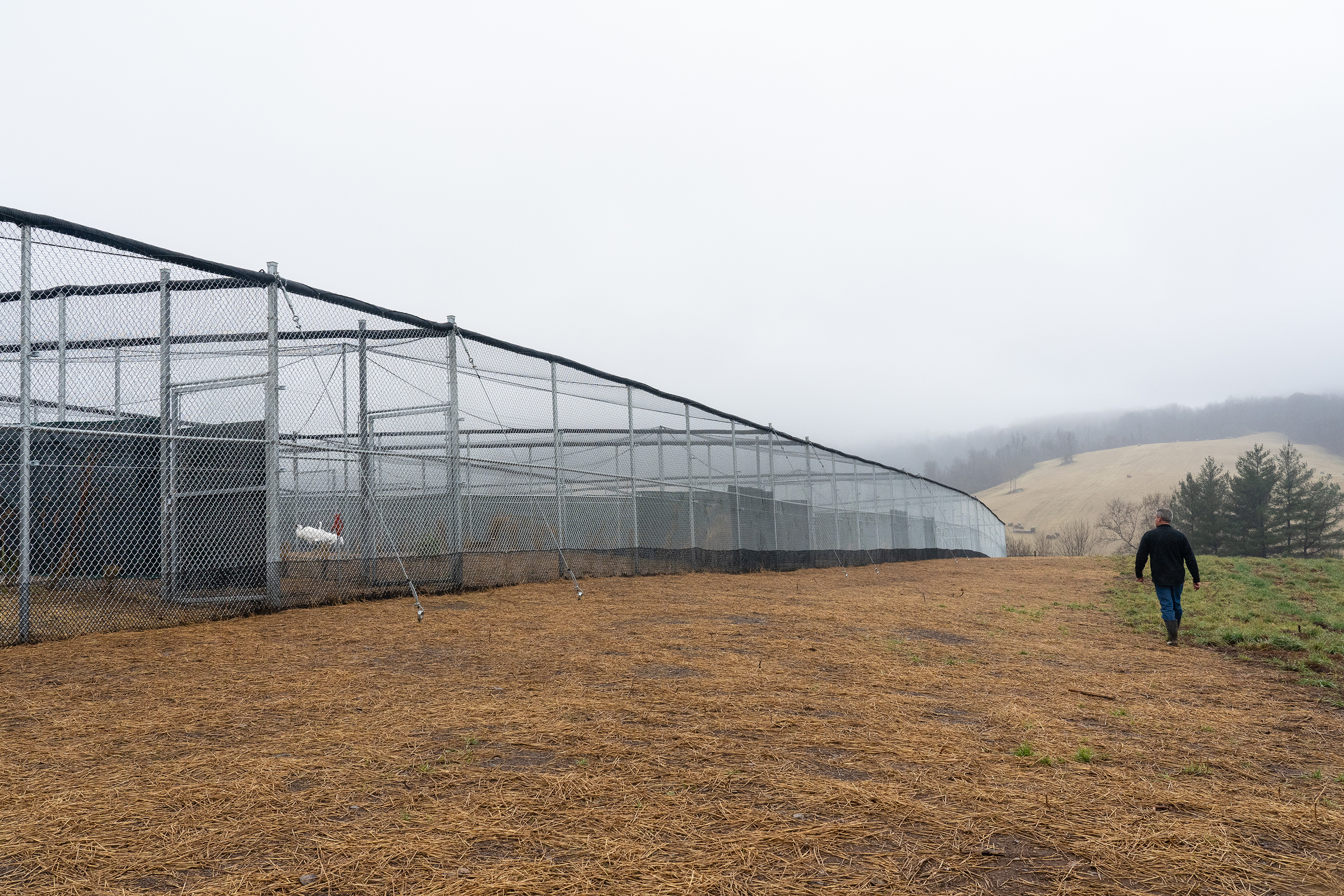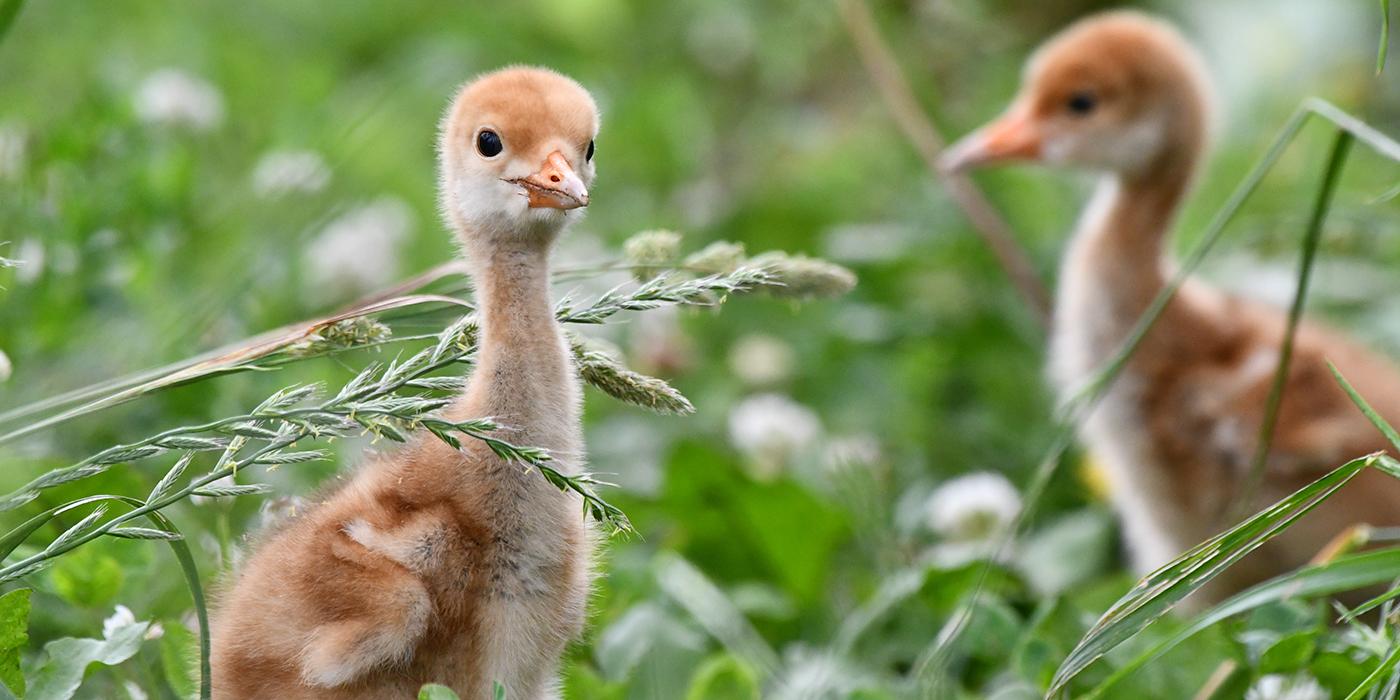New Whooping Crane Breeding Facility Opens at the Smithsonian Conservation Biology Institute
Chicks Born at SCBI Will Be Reintroduced to the Wild
Twelve whooping cranes, one of the most endangered species of crane in the world, moved to the Smithsonian Conservation Biology Institute (SCBI) in Front Royal, Virginia, yesterday, Dec. 16. It is the first time the 3,200-acre research facility dedicated to breeding and studying endangered species has been home to whooping cranes. With less than 900 birds on the planet, the six mated-pairs will be the founding members of SCBI’s whooping crane research and breeding program. The chicks that the pairs hatch will be candidates for reintroduction to the wild.
“Since there are so few whooping cranes left, it’s critical that every crane has an opportunity to breed and help create a self-sustaining population in zoos and breeding centers, like SCBI,” said William Pitt, deputy director of SCBI. “We have the space for multiple breeding pairs of cranes and their chicks, and we are experts in breeding cranes. We hope to have the same success breeding them as we have had with white-naped cranes, red-crowned cranes and hooded cranes.”
Ten of the birds arrived from the Patuxent Wildlife Research Center in Laurel, Maryland. The other two birds moved from the Smithsonian’s National Zoo in Washington, D.C. All of the birds were driven the approximately two hours to their new home in individual travel crates placed beside their mate’s crate during the trip. At SCBI, each pair will live in outdoor enclosures 50 yards long by 16.5 yards wide. Each enclosure has two ponds, three water troughs and a small shelter for the cranes. Whooping cranes usually choose to nest near water, and chicks swim to avoid predators before they fledge.
Every whooping crane pair will require the help of assisted reproduction techniques to successfully breed. SCBI scientists regularly breed cranes using artificial insemination.
In addition to breeding cranes, SCBI studies their reproductive biology and endocrinology. Through their research, SCBI scientists have identified the components of a habitat that are necessary for whooping cranes in human care to successfully breed and raise chicks. They will also continue to study whooping crane hormones through blood and fecal samples to determine how they affect the birds’ ability to lay fertile eggs. Those data combined with ultrasounds will help scientists understand the relationship between hormones and how follicles in the ovary develop. Finally, scientists will also research more effective methods to cryopreserve (freeze) whooping crane semen, which has proved challenging. If scientists can freeze semen, then it could be used to inject genetic diversity in the whooping crane population decades from now. That may be especially useful in the future since only 52 of the 163 whooping cranes living in human care are consistently laying eggs.
The Whooping Crane Breeding Facility and research program were made possible by the Volgenau Foundation and an anonymous donor.
“It’s very exciting to have four species of cranes living at SCBI now,” said Chris Crowe, lead crane keeper. “Whooping crane populations have been increasing, but the species still needs help recovering. It will be especially rewarding to grow our crane program and positively impact the wild population.”
Although the cranes will require human assistance to breed, the pairs will raise their own chicks, or the chicks will be cross-fostered by an experienced pair. Whooping cranes live in monogamous mated pairs. They have elaborate courtship rituals that reinforce their pair bonds. Their courtship behaviors include unison calls and dancing.
Whooping cranes breed and lay eggs in the spring. Eggs hatch after incubating for 30 to 35 days. Two chicks usually hatch in each clutch, though it is not uncommon for only one chick to survive. Chicks fledge when they are between 80 and 100 days old, but they will stay near their parents’ territories for up to nine months. The Whooping Crane Species Survival Plan will determine which chicks hatched at SCBI are eligible for release to the wild.
Habitat destruction, hunting, climate change and natural disasters as well as oil spills have all contributed to the decline of whooping cranes. By 1941 approximately only 16 whooping cranes remained in the wild. There are now approximately 686 whooping cranes living in the wild and 163 living in human care. The last wild population of whooping cranes winters in Aransas National Wildlife Refuge in Texas and migrates to Wood Buffalo National Park in Canada to breed. Populations have also been reintroduced to Louisiana and Wisconsin.
SCBI plays a leading role in the Smithsonian’s global efforts to save wildlife species from extinction and train future generations of conservationists. SCBI spearheads research programs at its headquarters in Front Royal, Virginia, the Smithsonian’s National Zoo in Washington, D.C., and at field research stations and training sites worldwide. SCBI scientists tackle some of today’s most complex conservation challenges by applying and sharing what they learn about animal behavior and reproduction, ecology, genetics, migration and conservation sustainability.
# # #
Photos: Skip Brown, Smithsonian Conservation Biology Institute
Related Species:
Image Gallery
